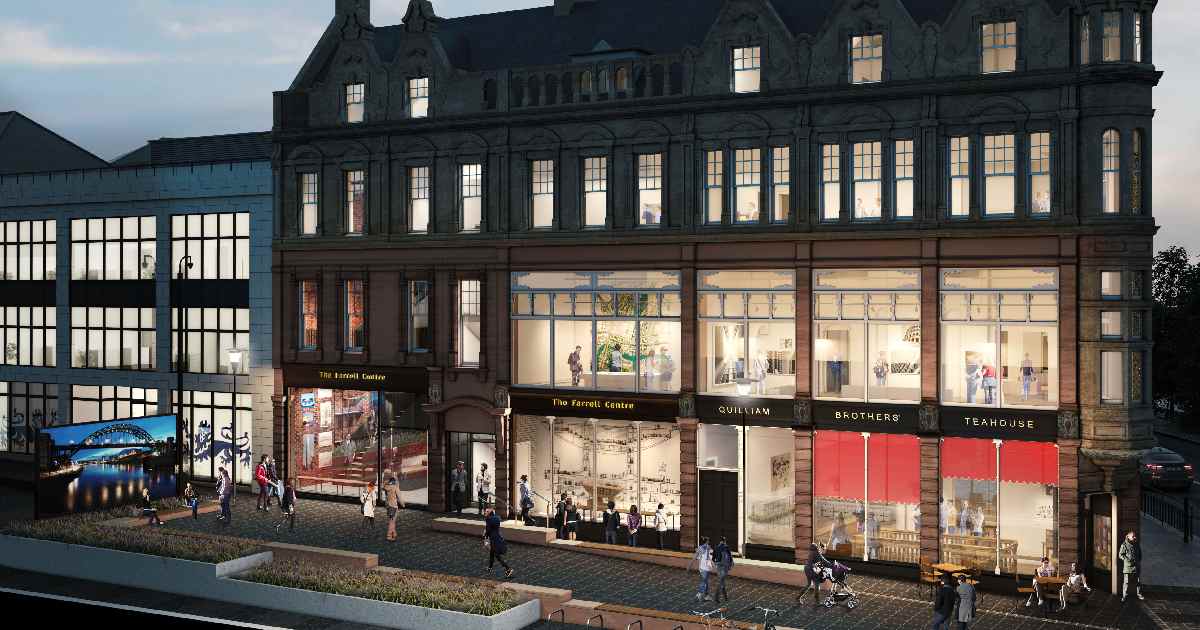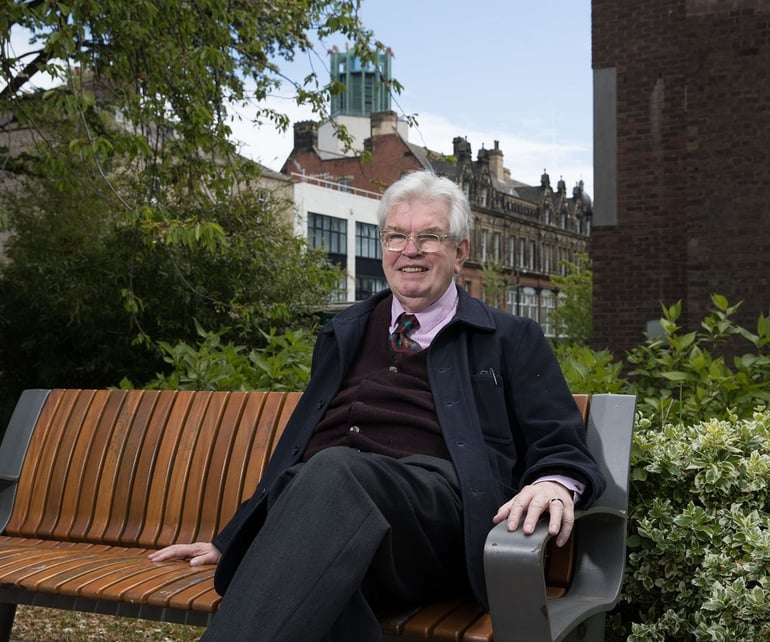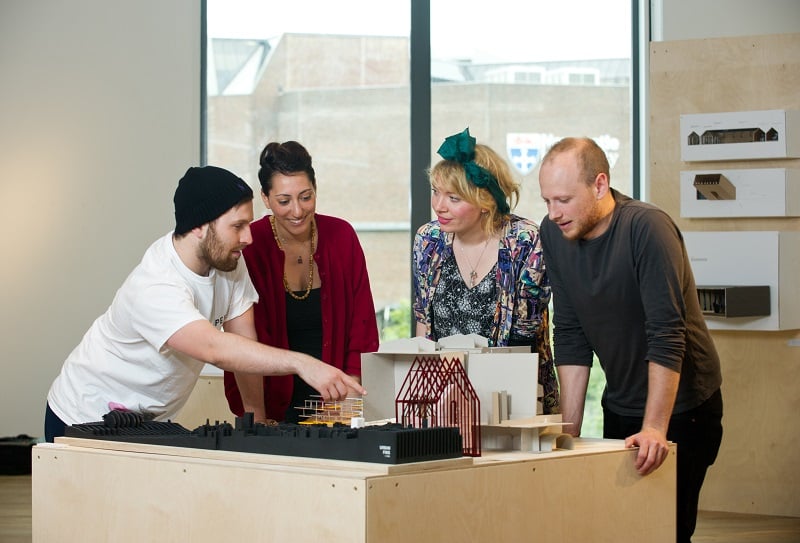
Introducing the Farrell Centre - with its Director, Owen Hopkins. A new public centre that’s aiming to widen the debate about the crucial roles that architecture and planning play in the contemporary world.
It’s staggering to think in the 21st century most people’s only contact with the planning system is still via planning notices. Those laminated A4 sheets of paper that appear tied to lampposts near the site of a proposed development.
We think this needs to change.
New developments in the city affect everyone and it should be much easier to find out what is happening and make your voice heard.
We have created the Farrell Centre to help make this happen and ensure that urban transformation works for the benefit of all.
Building the vision
The project has been instigated by Sir Terry Farrell, one of the UK’s most eminent architects and urban planners.
During his over fifty years in practice, Farrell completed award-winning buildings and masterplans around the world. He became known as one of the leading advocates for the potential of architecture and planning to create cities that are more open, sustainable and inclusive.
In 2013, Farrell was commissioned by the UK government to conduct a review into the country’s built environment. Identifying a lack of public engagement with architecture and the planning process, in the report published the following year. Farrell recommended that every city should have an ‘urban room’ where local people can go to learn about the past, present and future of where they live - an aspiration that provides a key starting point for the Farrell Centre.

Image: Sir Terry Farrell
Farrell recommended that every city should have an ‘urban room’ where local people can go to learn about the past, present and future of where they live - an aspiration that provides a key starting point for the Farrell Centre.
But why Newcastle? Farrell himself has longstanding connections to city:
- he grew up in the city and studied at Newcastle University (1956–61)
- In the early 1990s, he produced the masterplan for regenerating the quayside
He undertook major projects in the city, too:
- the Centre for Life (2000)
- the Newcastle University campus masterplan (2004)
- and the extension to the Great North Museum (2009)
In 2018, Farrell generously donated his practice archive to Newcastle University as a resource for research and education. At the same time, he pledged £1 million towards the creation of what would become the Farrell Centre.
Connecting the local and the global
Cities do not and have never existed in isolation.
They are inextricably tied to their regions and to the wider world and the challenges and opportunities they face are often replicated elsewhere. So, while the Farrell Centre is located in Newcastle and embedded in the local, its remit and frame of reference extends further, exploring issues, ideas and situations of local, national and global meaning and relevance.
Of these there is nothing more urgent or important than the climate emergency, which requires far-reaching changes to how we live and, perhaps even more fundamentally, to how we relate to the planet we call home.
While architecture and planning are undoubtedly part of the problem – the built environment is one of the largest emitters of CO2 – we also believe they can be part of the solution.
A changing world
This contention provides the starting point the centre’s inaugural exhibition – More with Less: Reimagining Architecture for a Changing World.
We have commissioned four architects to create installations that explore how we can dramatically reduce the built environment’s carbon footprint, but without compromising – and maybe even enhancing – architecture’s potential to bring about social, cultural, and technological transformation.
In this mission, we have the unique advantage of being located within Newcastle University’s School of Architecture, Planning and Landscape and the resulting proximity and access to world-leading research into the built environment.
And for More with Less, one of our collaborations is with researchers in the Hub for Biotechnology in the Built Environment, who are experimenting with living materials, not simply as alternatives to the carbon-intensive materials that currently dominate construction, but in order to facilitate a fundamental shift in the relationship between the built and natural environments.
Inside the Urban Rooms
Alongside the temporary exhibition programme are three multi-use spaces, which we are calling the ‘Urban Rooms’.
Here, our focus is directed towards the local. Arranged around three themes or actions – Plan, Build and Participate – in the Urban Rooms, visitors will find a range of displays, objects and activities exploring how architecture and planning have shaped the Newcastle and Tyneside of today and the roles they can play in reimagining it for tomorrow.
The Urban Rooms are also where we hold our live programmes of talks, workshops and community forums, which offer a platform for new and diverse ideas and perspectives around the future of Newcastle and Tyneside and of city-making more generally. What our visitors find in the Urban Rooms on one day may not be what they find when they next visit.

Like the city itself, the Urban Rooms are an ongoing project, which we hope our visitors will play an active role in shaping.
In a world defined by profound environmental, social and technological rupture and transformation, the potential of architecture and planning to create a more inclusive, democratic and sustainable world has never been more important.
Rooted in Newcastle, but with a frame of reference that’s global in scope, we hope the Farrell Centre will offer a vital new platform for debating the future of architecture and planning, ensuring that everyone has a voice in this critical conversation.
You might also like:
- Read more about Owen Hopkins, Farrell Centre Director
- Visit the Farrell Centre website and discover what’s on
- Discover the More with less exhibition
- Learn about our School of Architecture, Planning and Landscape
- Explore the Hub for Biotechnology in the Built Environment
Find out more about the great work we're doing when you explore our blog. Alternatively, sign up to receive the latest insights and research stories directly to your inbox.

